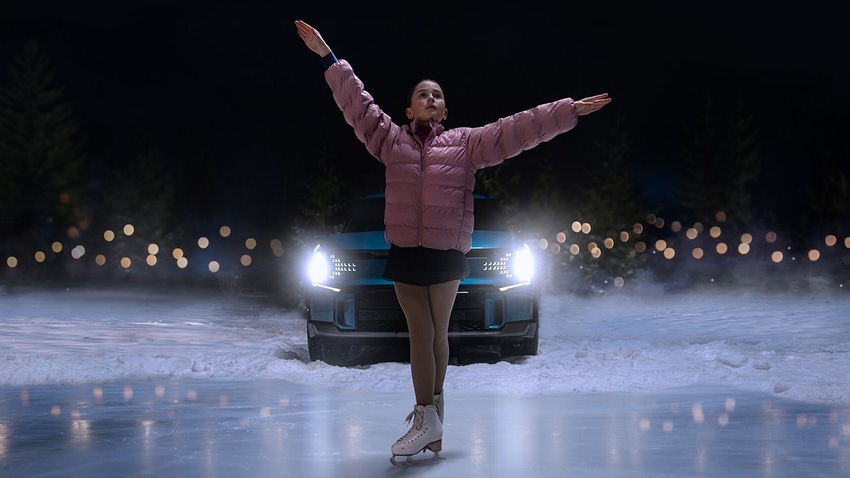2024 EV Super Bowl Ads Run On Different Currents
BMW, VW, Kia use those pricey Super Bowl LVIII ad spots for very different messaging.

Three carmakers—BMW, Volkswagen, and Kia—each made the choice to pay roughly $14M per minute plus production costs to put an EV in front of the eyes of the Super Bowl LVIII TV and online audience. The message each chose to share says something about how they see their potential customers in 2024. The messages were as different from each other as the EV models—which is to say, quite different, indeed.
This may seem a frivolous topic to spend time on, though the amounts spent by the car makers certainly aren’t frivolous. But it’s worth remembering the context:
These companies, like their competitors, are pretty much all in on the electrification of the US auto industry: They’ve set aggressive goals and—with help from federal tax breaks and grants—are putting up the money to make it happen. The automakers and the government are completely gung-ho—but the actual car buyers still need some convincing. As we’ve reported, the end of 2023 saw a downturn in EV sales, leading to OEMs scaling back some production and rewriting timelines.
So, making a case for an EV to what turned out to be the largest US TV viewing audience of all time is a serious undertaking—however lighthearted the tone of a given message may be.
The messages were very different from each other and often different from what was tried in Super Bowl EV ads in the past.
Let’s take a look.
BMW: ‘The real deal’
BMW’s ad for the all-electric i5 begins with actor Christopher Walken accepting a hotel valet’s compliment of the vehicle by saying, “It’s the real deal—100% electric.” At which point the valet becomes the first of many people—his tailor, makeup artist, drive-through barista—to greet the actor by imitating his distinctive phrasing to his face: Result: Comedy, as Walken politely grows more frustrated with each encounter. (Halftime performer Usher cameos at the end for no apparent reason.)
BMW’s ad spot eschews any messaging about advantages of the battery-EV platform, instead simply exhibiting the car as a luxurious example of a modern high-end automobile as Walken takes it though his increasingly frustrating day. The portrayal is on the i5 as a new, cool car—one that just happens to be 100% electric. It’s a change of focus. Nonetheless, the message is clear: This EV is as ‘real’ a BMW as any ICE BMW.
Volkswagen: ‘You love us; you can trust us’
Volkswagen’s ad for the ID.Buzz electric van—not actually available yet in the US—likewise spends no time on the electric aspects of the vehicle (or any aspect of it), instead putting its focus on the company’s 75-year history with US drivers. The nostalgia-driven ride through the history of its iconic models and the American drivers who have loved them is soundtracked by Neil Diamond’s anthemic 70s hit, “I Am, I Said.” He’s a American pop icon singing about other American pop-culture icons like the original Beetle in the 50s, the hippie-embraced Microbus in the 60s, the Rabbit—and eventually up to the not-yet-iconic electric ID.4 and finally a quick glimpse of the 2025 ID.Buzz itself, which is styled to invoke the Microbus.
VW calls the ad “An American Love Story” and, different as it is from the BMW spot, it shares with it a message more about the car company (and its US customers) than about the EV. VW trumpets its status as a beloved brand and the unspoken message is: “You’ve loved us till now for good reason: Now trust us that the all-electric van will be another beloved icon.” The message is almost overwhelming visually but it’s completely tacit.
(That’s probably a wise choice: No overt VW message of “Hey, trust us on this!” is likely to go over well, given the company’s recent history of violating customers’ trust in the ‘Dieselgate’ emissions scandal less than a decade ago.)
Kia: Electric power empowers
If you thought VW’s spot was as an overt a tug on the heartstrings as we’d get from an EV maker this year, you just had to wait until the 4th quarter of the game—when Kia released its spot for the 2024 Kia EV9 all-electric SUV.
Set to a song by Coldplay and Cat Power called “Wish I Was Here,” the ad shows a young figure skater completing her program and seeing her applauding dad—and an empty seat next to him. The kid looks disappointed—until dad drives her into the woods, strings up some lights and a loudspeaker by a frozen pond, and enables the young skater to do her routine again—this time for her beloved grandfather, watching from an adjacent cabin.
And what enabled the heartwarming encore performance is the EV9’s Vehicle to Load (V2L) capability: It’s acting as the power generator for the lights and sound. (Although I wondered why dad couldn't just plug into the cabin's electricity.)
This ad is ranking near the top of many post-game analyses of the Super Bowl ads for the brave little skater and her family’s story (example: it’s number three in USA Today’s Ad Meter rankings.)
What makes it notable for our discussion is that it is the only ad this year that actually shines a light (no pun intended) on an actual advantage of the all-electric platform: The SUV is also a rolling power generator. This echoes the message of Ford’s original ads for the all-electric F-150 Lightning three years ago. (Yes, that would be the same F-150 Lightning that saw sluggish late-2023 sales).
That focus—"this SUV is remarkable because it’s an EV and can do more"—is different from BMW and VW, who choose to message cool new cars that also happen to be EVs.
Which approach will be more effective in driving customers won’t be known for some time, if ever. But they all say something about how the carmakers want their EVs to be seen by the public in 2024 as the push for electrification continues across the industry.
About the Author(s)
You May Also Like





